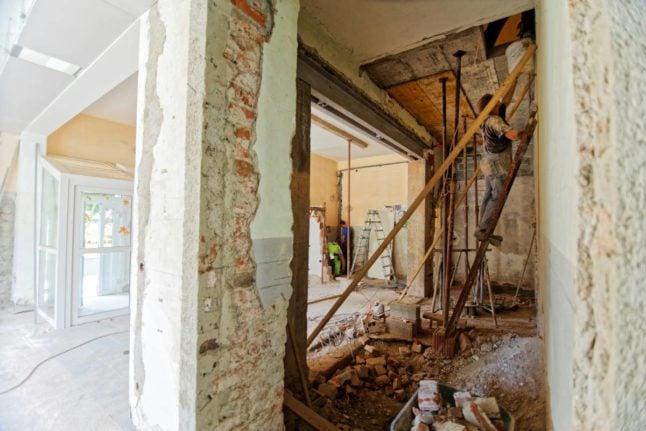This article was based on several questions from a reader. The Local Norway aims to answer readers’ questions, even if it isn’t used for an article. So if there’s something you’ve wondered whether it’s practical or cultural, you can drop us a line at [email protected]
It’s no surprise that Norway’s countryside attracts so many admiring glances from across the world as, depending on where you end up, you could be within an hour’s drive of fjords, mountains, and forests.
The prices explained
The website Finn.no lists almost every property for sale in the country. After a few searches, it will quickly become apparent that homes in rural Norway seem like excellent value.
Using figures from the property firm Krogsveen, the average cost of property per square metre in Oslo is 89,000 kroner, the national average is 50,674 kroner, and in Møre og Romsdal in western Norway, the average cost is much lower at 28,722 kroner.
Møre og Romsdal is one of Norway’s more remote counties, home to stunning regions like Sunnmøre and Sunnfjord.
READ ALSO: How much does an apartment in Norway cost?
This illustrates how much more you can get for your money in rural parts of Norway compared to elsewhere.
There are some reasons for the price differences. Firstly, some homes in rural areas require full-time residence. If you plan on moving full-time, this won’t be an issue.
If you are after a holiday home, this will be a barrier. Prices are typically higher in areas that are popular with leisure property owners.
Some of the cheaper homes will be “fixer uppers”, even if you want to keep the home’s original charm. Bathrooms, kitchens, plumbing and electrics can all be incredibly expensive.
Furthermore, investing in these areas of the home is unlikely to directly increase the property’s value due to the low demand.
Farms should be avoided
The charm of a Norwegian farm is difficult to avoid, lots of room, a large welcoming home and bright red farm buildings.
However, these buildings are worth avoiding unless you intend to use the property for farming.
Rules on the ownership of agricultural properties date back more than 1,000 years, and there are a few key things to be aware of.
Firstly, you will need to live on the property full-time and typically use it for its intended purpose: farming. You will also need to apply for a license to own the property. This is part of a government act to protect agricultural land. Then, there are a number of special rules to ensure that some farms remain in a family line.
Farming in Norway isn’t a particularly profitable venture either, so taking over a farm may not be as attractive once all the rules are laid out.
The rules for foreigners buying rural properties
Norway’s property market has no restrictions on whether foreigners can buy property.
This means you can buy a property in Norway’s stunning rural regions. However, there are several practical obstacles.
Most practical issues don’t apply to full-time residents.
However, non-residents can’t get a Norwegian mortgage as they have ties and income to the country.
Furthermore, not having an electronic ID and identity number will make it quite difficult to put in bids on homes, set up utility bills for the property, and get a bank account to pay these bills.
If you manage to purchase a place, you can obtain a D-number from the Norwegian Tax Administration to try to open bank accounts and pay bills.
Other practical info
For starters, you will likely need access to a car if you buy a place in the countryside.
Owning a car will be crucial for reaching amenities, and depending on how remote you choose to go, you could end up a 30-minute drive away or need a car suitable for tackling difficult terrain to reach main roads.
You’ll also depend on a car to get to and from work and to ferry kids to school and back.
Houses in rural areas may also have much more expensive running costs. Older, larger properties are notorious for sky-high energy bills in the winter.
Of course, finding a suitable job to match your career ambitions can be much more difficult in rural areas than in the bigger cities.
READ MORE: The downsides of life in the Norwegian mountains you should know about



 Please whitelist us to continue reading.
Please whitelist us to continue reading.
Member comments